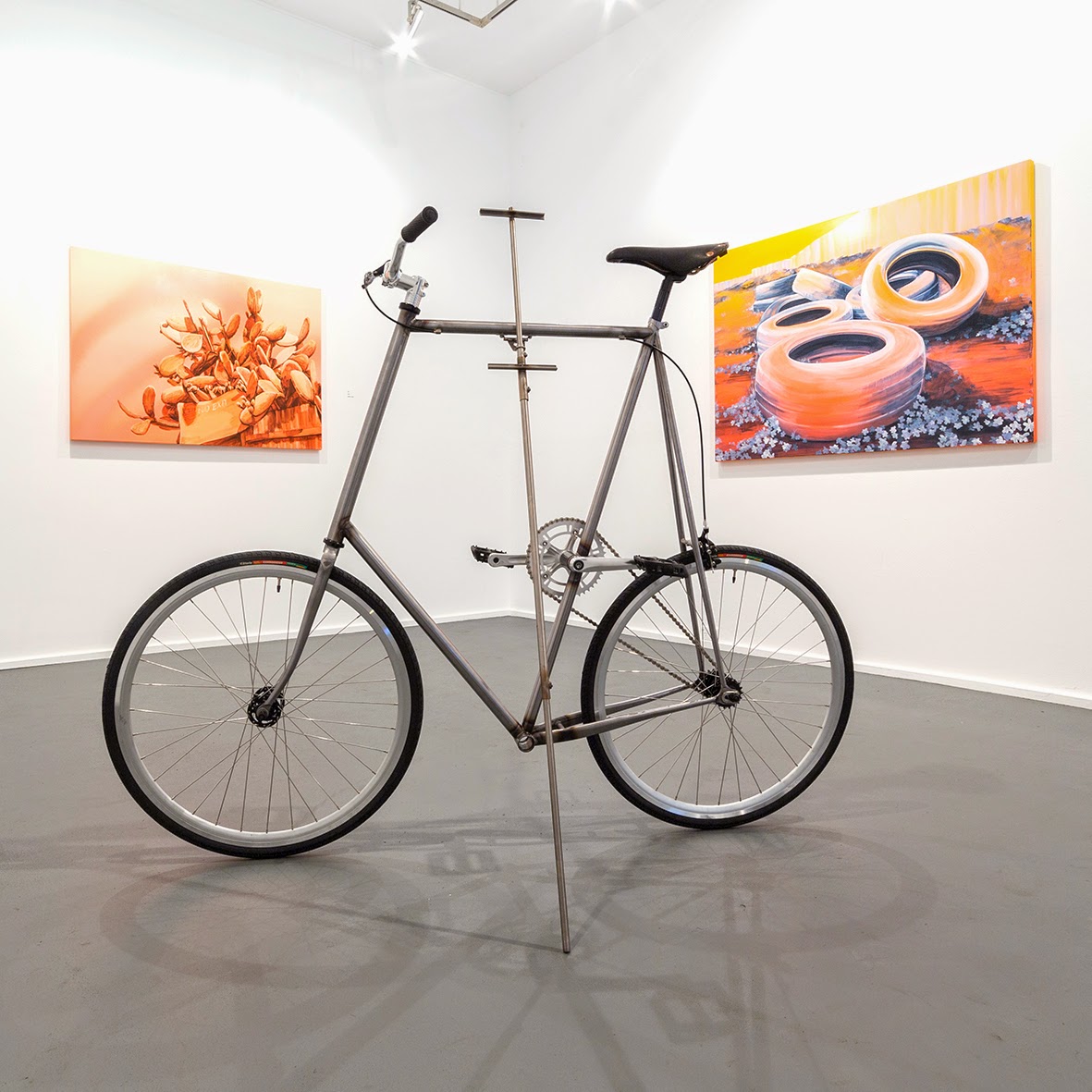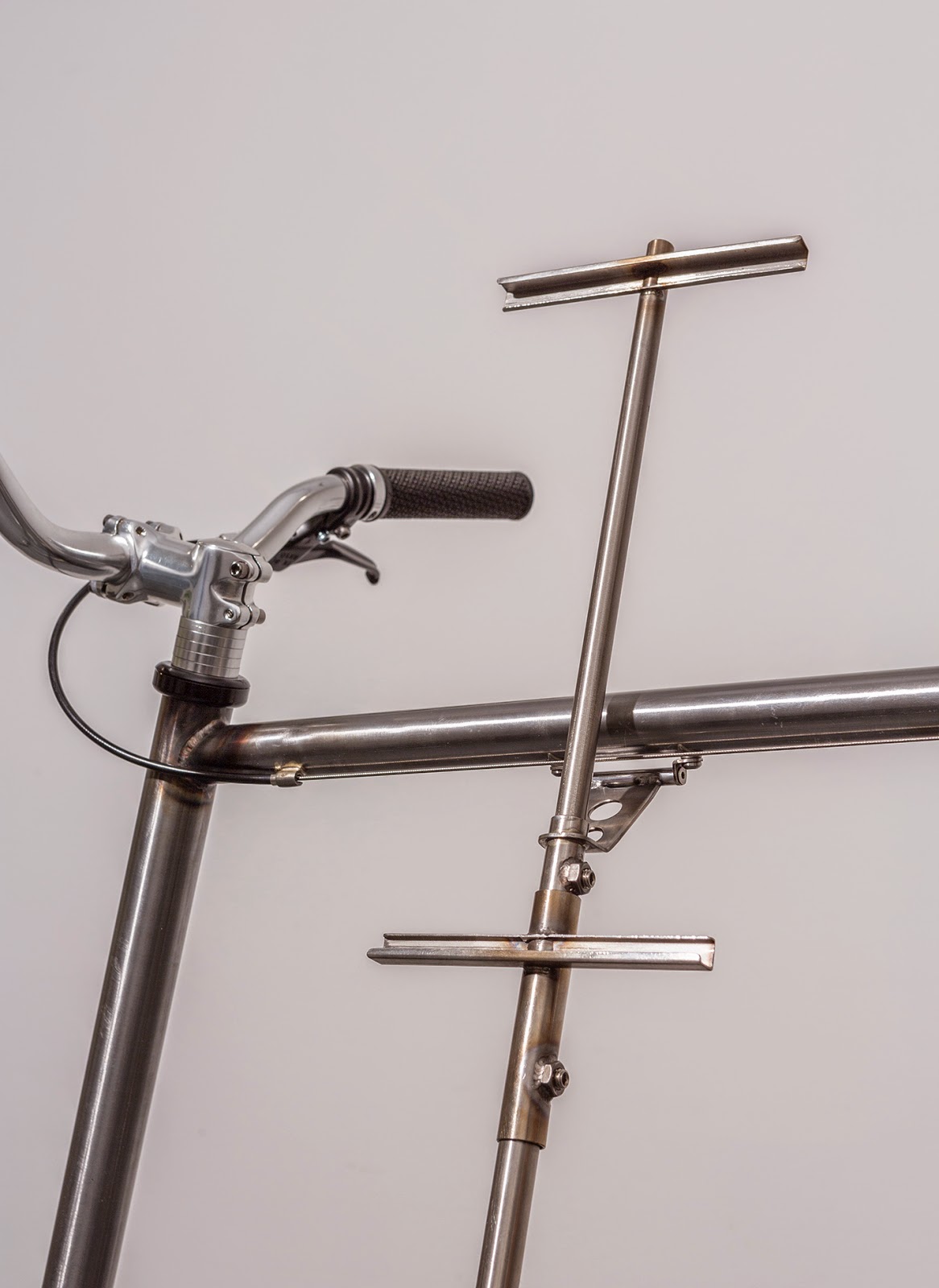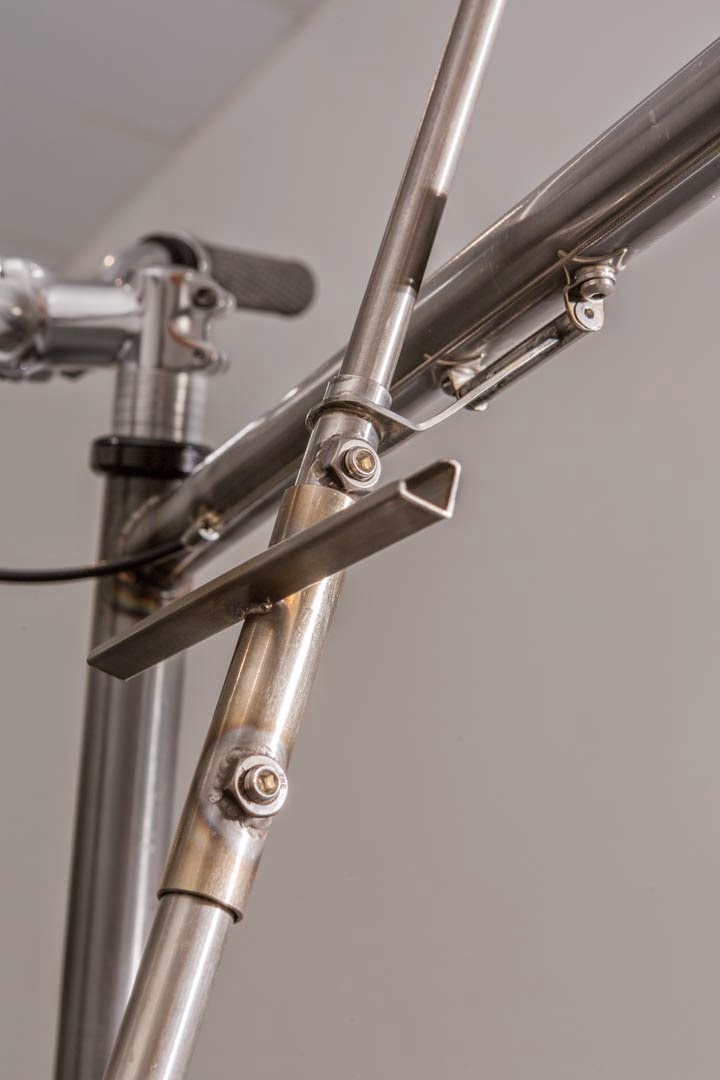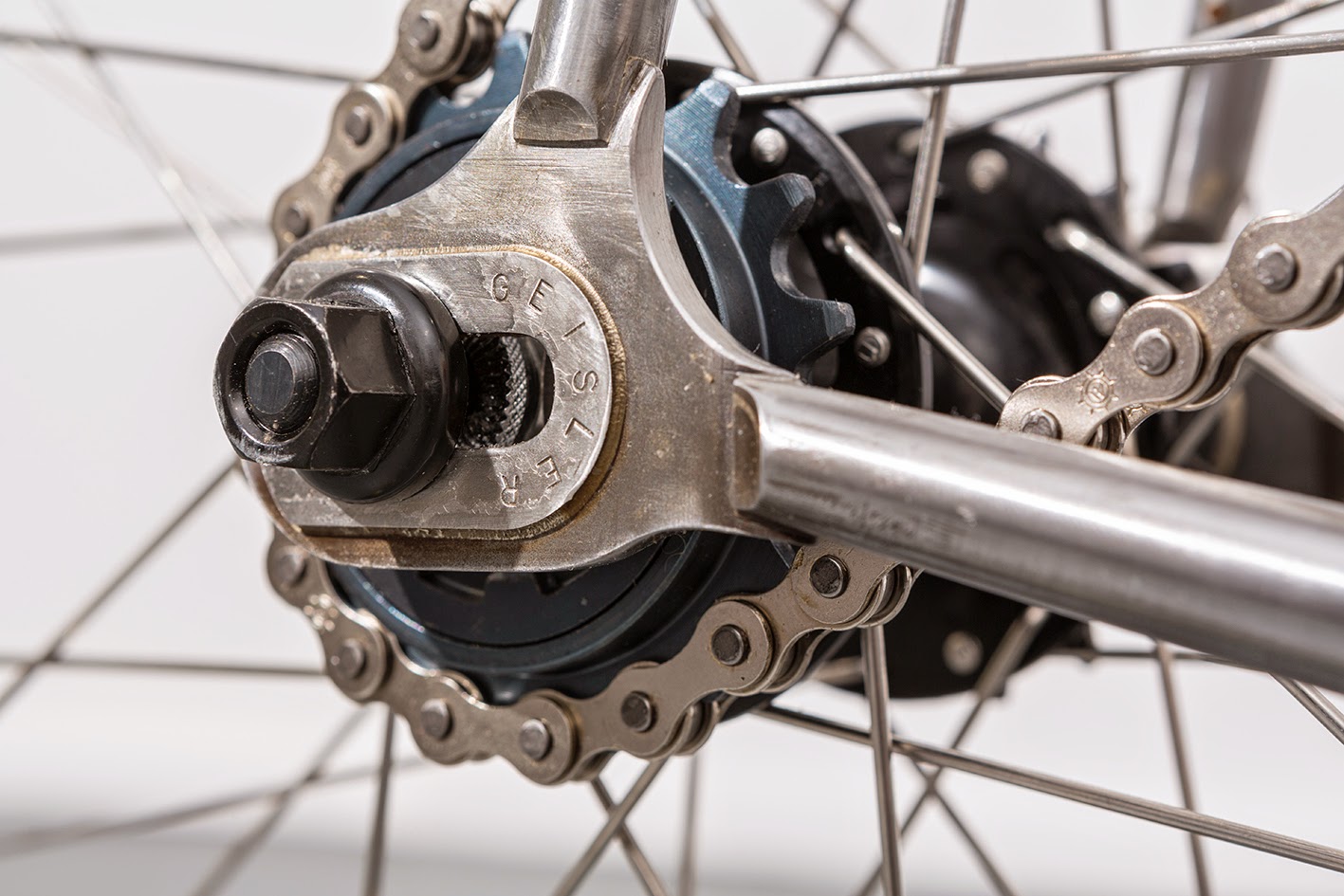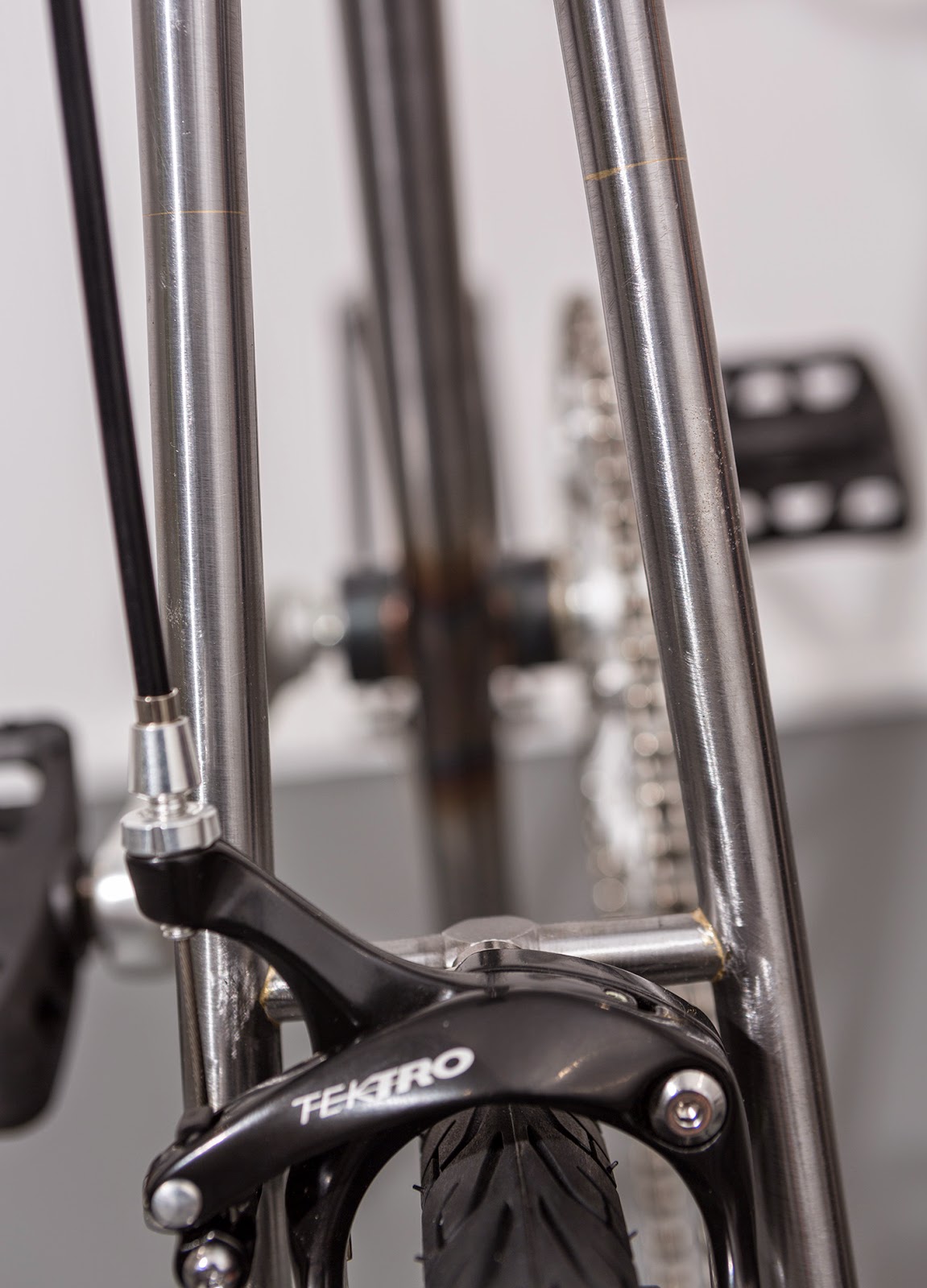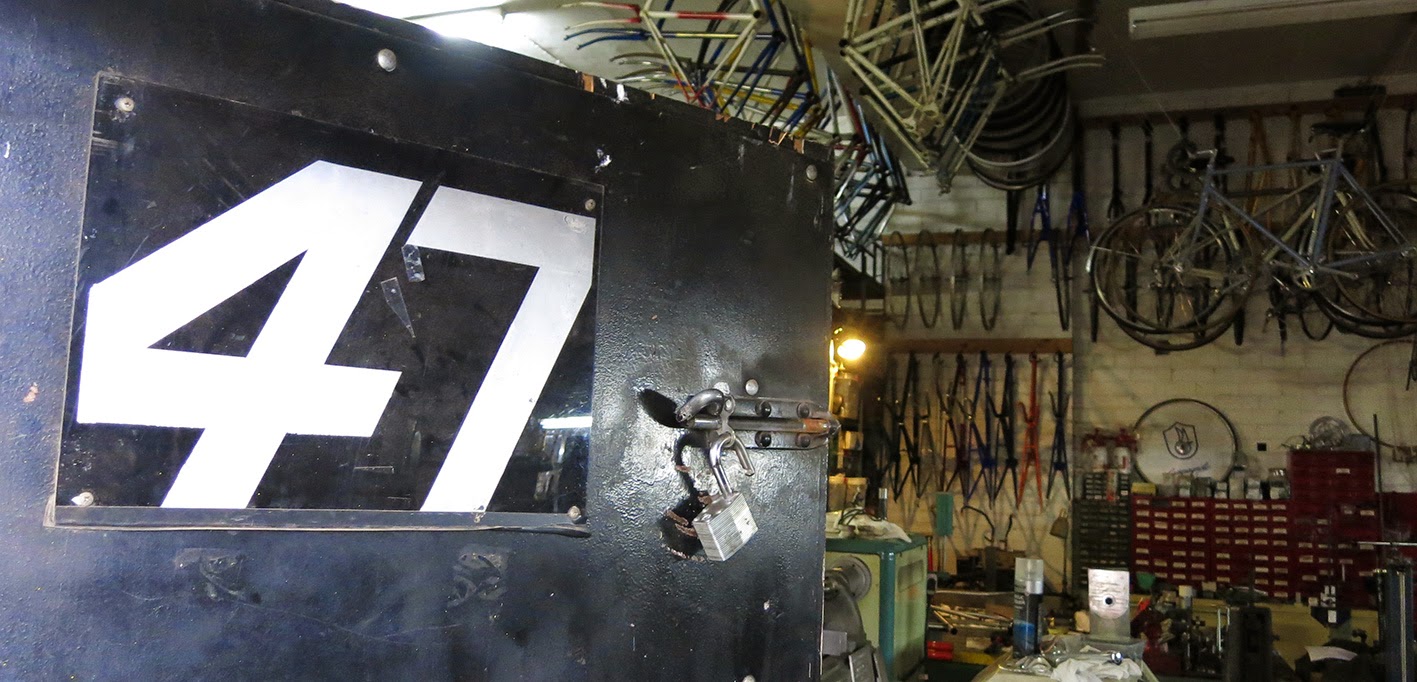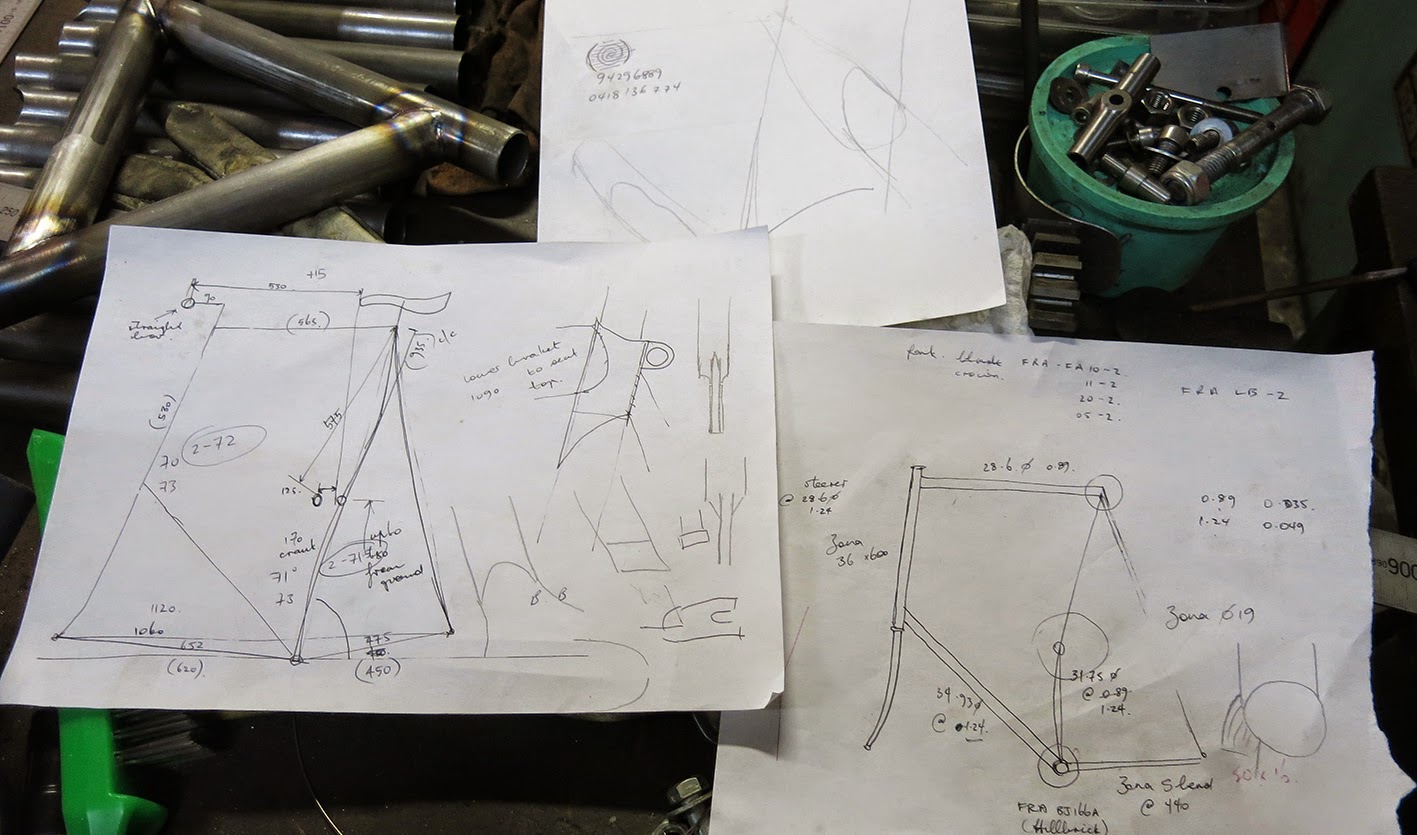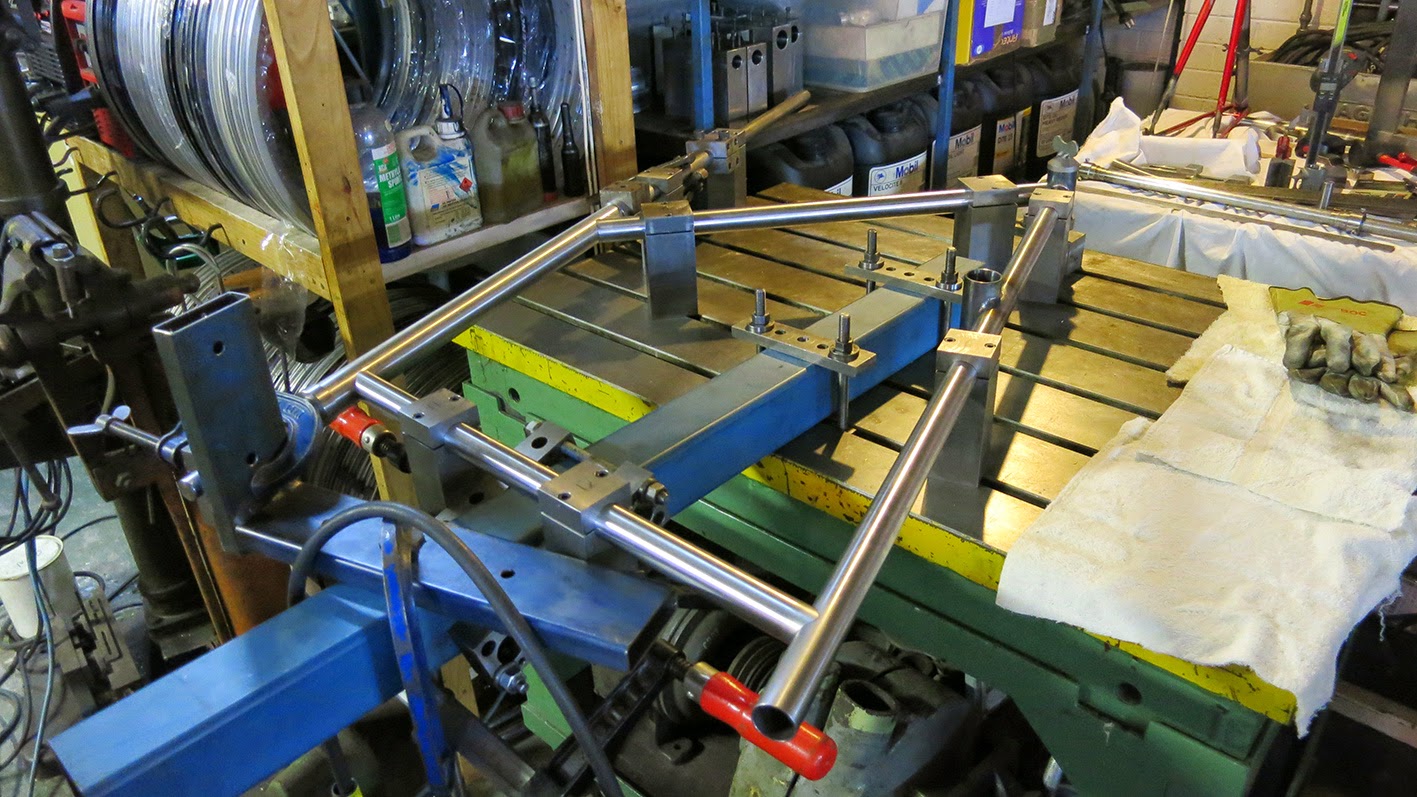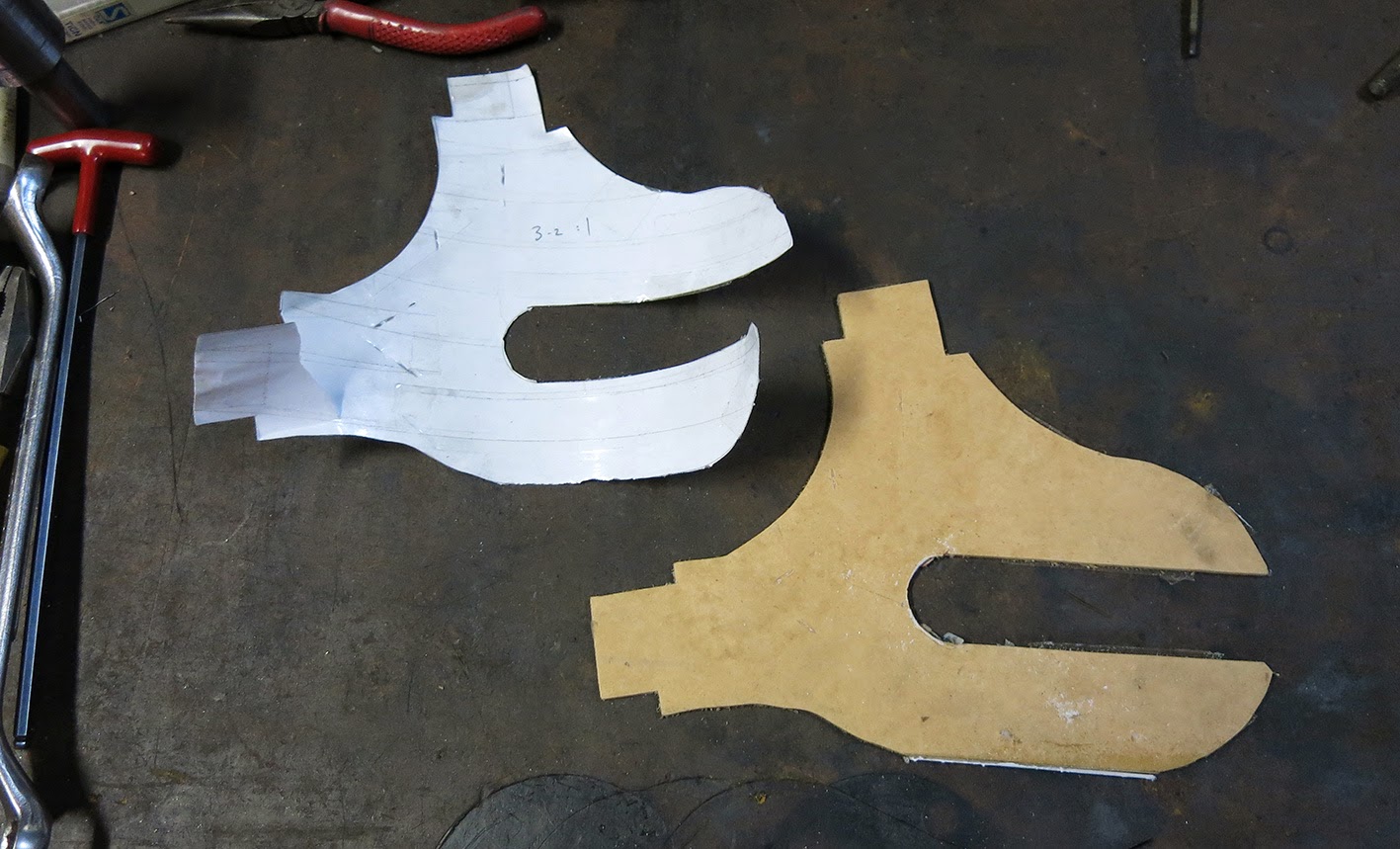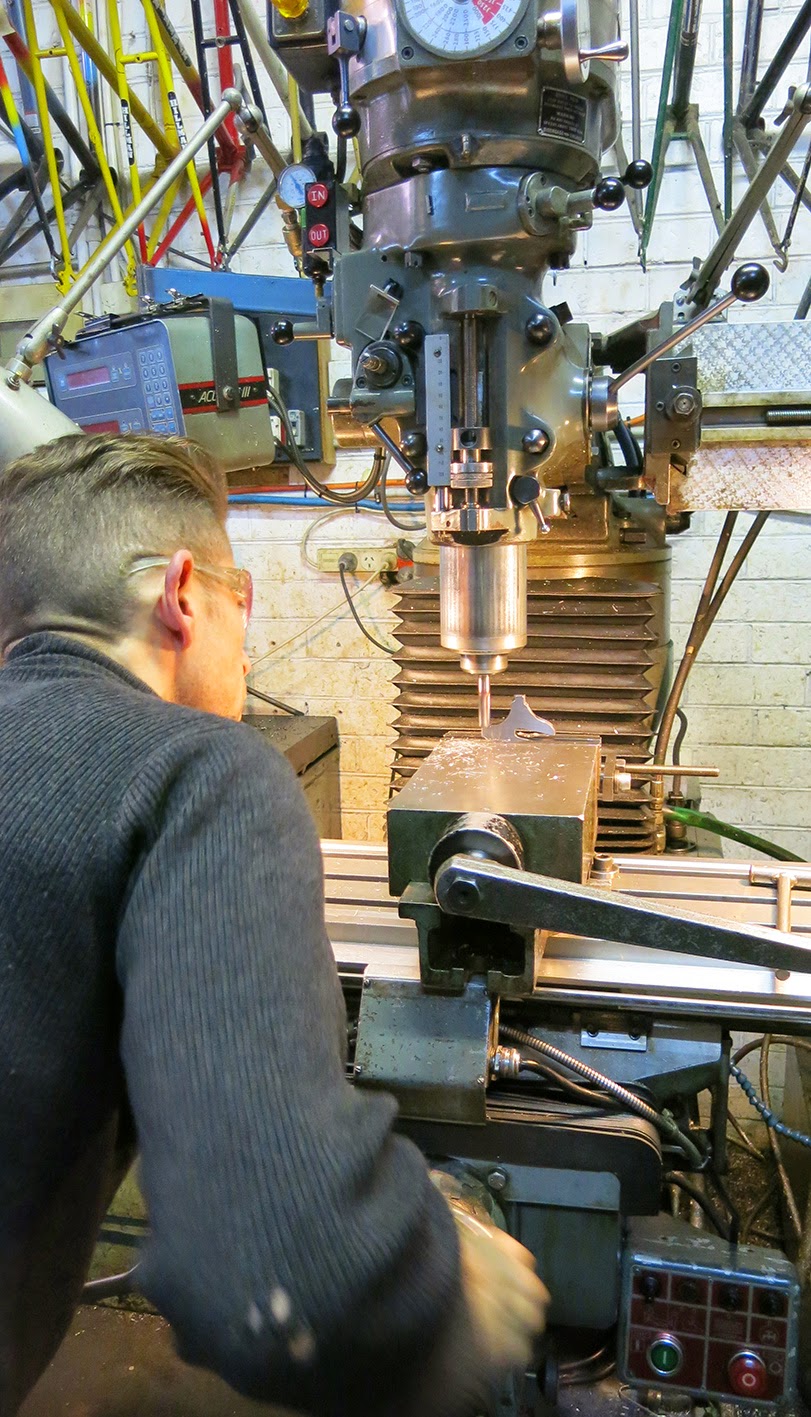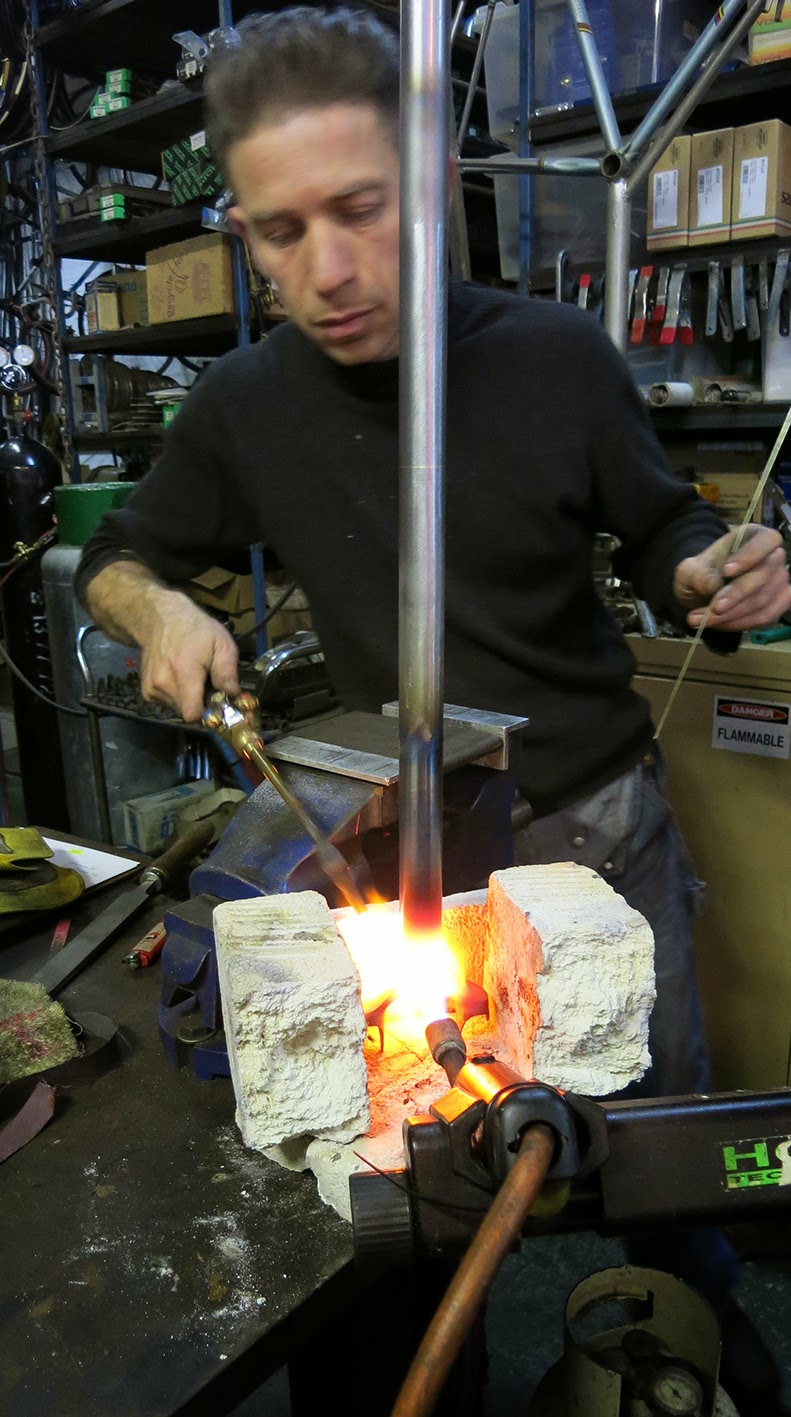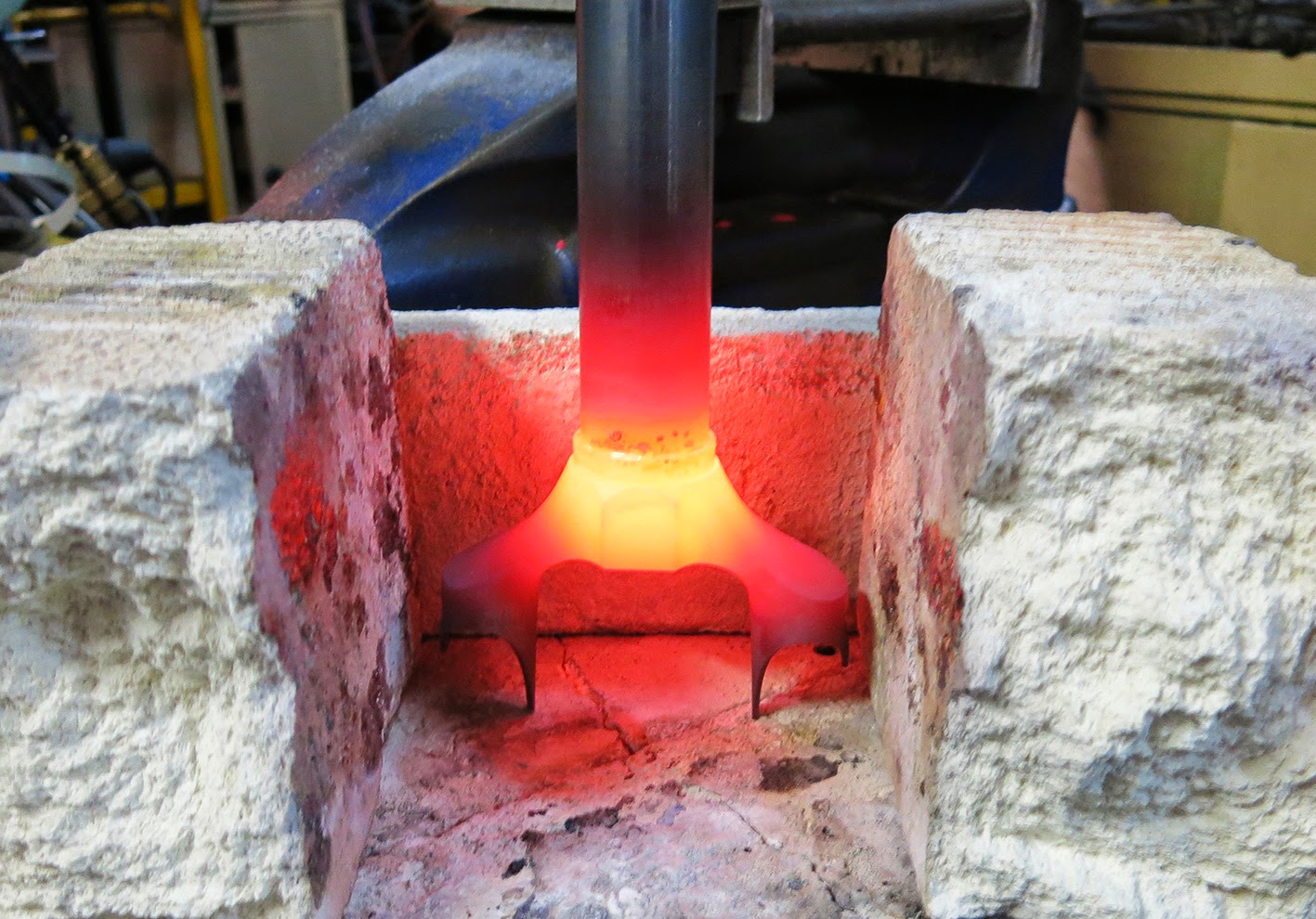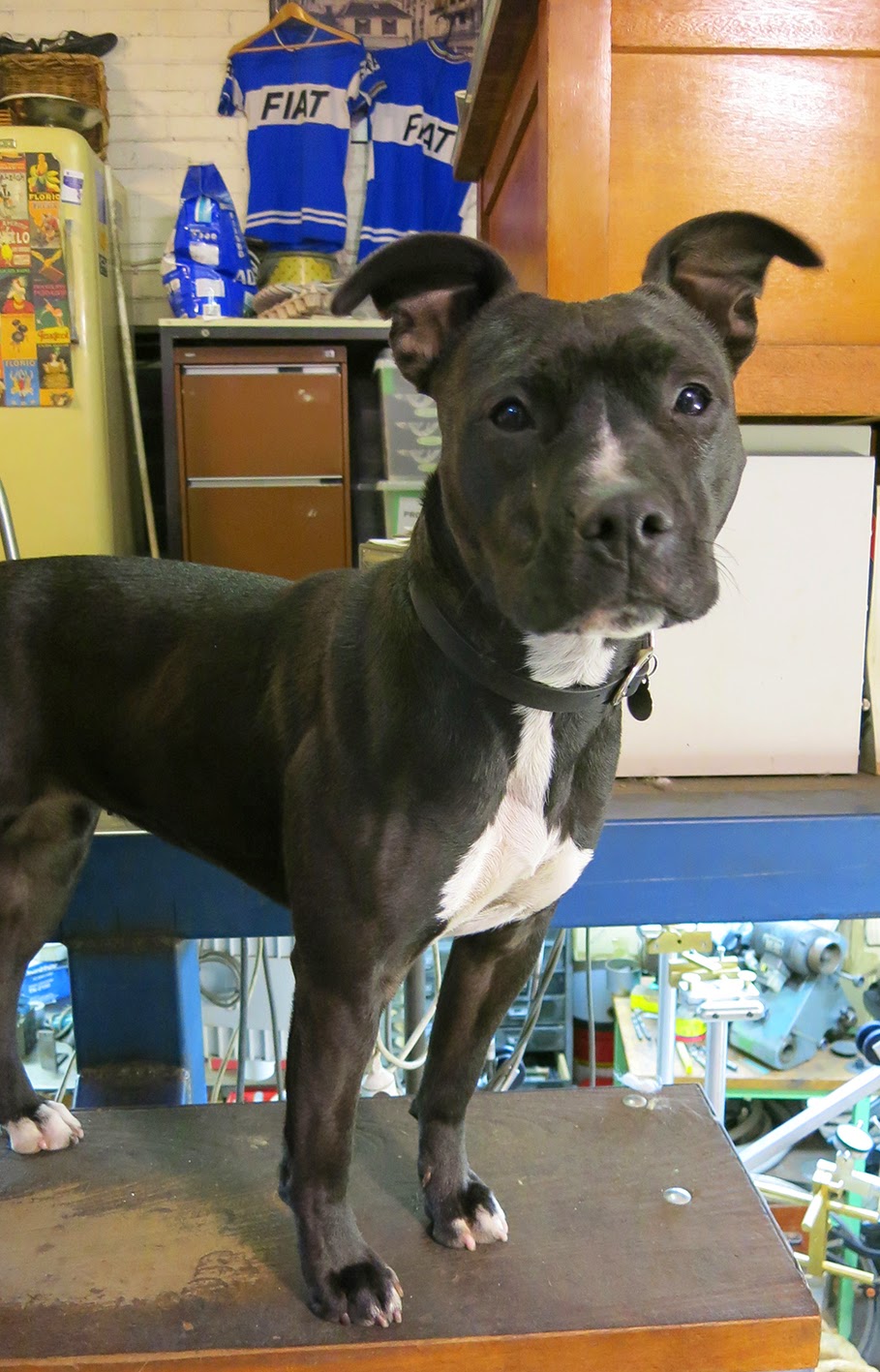After
such a massive amount of energy being injected into the realisation of
this fantasy it has been a pleasure to include it in an exhibition. The
overall show included a number of bikes, paintings and sculptures that
explore various ways in which bicycles might be shifted to be considered
in a more creative way and ways in which these things might help us to
think about the world around us.
Here are a few glamour shots of the bike, courtesy of Sam Roberts Photography. Of course it is important to note at this stage that the bike is most exciting when it is outside, doing its natural thing, rather than being motionless in a gallery. Those shots will come in due time.
Here are a few glamour shots of the bike, courtesy of Sam Roberts Photography. Of course it is important to note at this stage that the bike is most exciting when it is outside, doing its natural thing, rather than being motionless in a gallery. Those shots will come in due time.
The surface finish of this bike is a simple clear
lacquer, allowing the viewer to see all of the metals' nuances and
processes involved. In terms of shifting the object into a sculptural
consideration the emphasis here is on an honesty and directness in
relation to materials. It will be great to build this up one day with a
suite of juicy high end parts but that will have to wait for future
versions and presentations. The current build is courtesy of a generic
urban single speed donor bike -pragmatic and cost effective with room
for added indulgence.
The bike becomes free standing courtesy of its
easel attachment.
The easel component fits to the frame via a pair of bidon mounts.
The easel extensions are fixed in place via grub screws.
Did I mention attention to detail?
Upper BB floating around all on its lonesome.
Lower BB junction
Seat stays. If you look really closely (assume a squinting stance in front of your screen) you can see the tiny ring of bronze where the stays have been extended.
